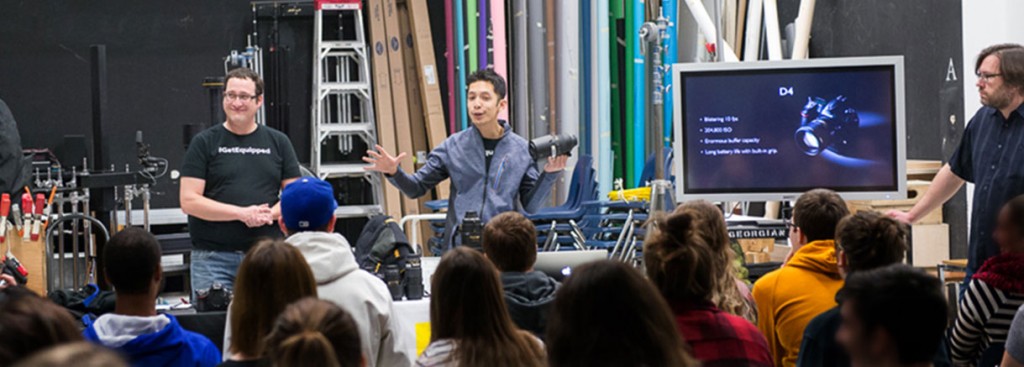
Rochester Institute of Technology - Design and Imaging Technology AOS
Design and Imaging Technology AOS
Kurt Stoskopf, Chairperson
585-286-5345 (VP), kwsnda@rit.edu
http://www.ntid.rit.edu/vcs

Program overview
People who work in the design and imaging field are responsible for designing, organizing, and producing print and Web-based media for business, communication, publishing, manufacturing, entertainment, and advertising MARKETS. This is a large, exciting field that requires a variety of computer-based and traditional visual skills. The design and imaging technology major provides opportunities for students to enter various careers ranging from creative to highly technical positions at various degree levels.
The design and imaging technology major includes eight required core courses (24 semester credit hours) plus a required cooperative education experience. The core courses provide a solid foundation for continuing in advanced courses, a baccalaureate program, and employment. Several of the core courses are scheduled during the first year, and additional courses are completed during the second year.
In addition to the core courses taken in the first year, students immediately begin course work in their concentration. Students may choose a concentration in graphic design or graphic production. Both concentrations consist of six courses (18 credit hours).
All students entering the major will be given an aptitude self-assessment experience. As a result of this assessment profile, students will be counseled and placed into an initial concentration: graphic design for students with creative aptitude and interest; graphic production for students with technical/production aptitude and interest. The assessment is not final. Based on success and demonstrated capabilities, students may request or be counseled to change their concentration.

The curriculum includes six credits of program electives which will enable the students to develop additional skills and knowledge to better prepare them for employment and/or for continued education.
All students gain real work experience through one term of required cooperative education employment. They also complete a required portfolio workshop course in which they refine and complete their portfolio as needed for an application to a baccalaureate program or for the search for employment.
STEM and the DIT program
Education in STEM (science, technology, engineering, math) careers is a major emphasis for students, parents, and counselors as they consider which college programs match students' interests and aptitudes. FUNDING for STEM career preparation is often a driving factor. The NTID design and imaging technology major definitely is a STEM-career program. Graphic design is listed in the technology/ computer science STEM disciplines. Graphic design and production for print, the Web, and digital media cannot happen without the immersion of computer technology.
On-the-job responsibilities
Depending on the specific concentration and elective course selection, graduates use computer-based methods to produce drawings, layouts, illustrations, and digital photographic images; prepare DOCUMENTS for print, the web, and digital distribution; produce interactive digital media; perform digital retouching and restoration of photographic images; produce composite digital images; design and produce websites; produce computer animations; plan and produce short edited videos; and operate electrophotographic digital printing and inkjet systems, simple bindery, and finishing equipment.
Places of employment
Graduates usually find employment in a variety of commercial, corporate, government, and educational settings. Examples include computer graphics firms, advertising agencies, art studios, printing or manufacturing plants, prepress companies, in-house printing or marketing departments, book and MAGAZINE publishing houses, newspaper facilities, government agencies, industrial training or media departments, educational media centers, and educational institutions.
Graduates may qualify for positions such as production graphic artist, graphic designer, digital photo artist, digital photography technician, digital prepress technician, video technician, website designer, website technician, and digital printing systems operator.



